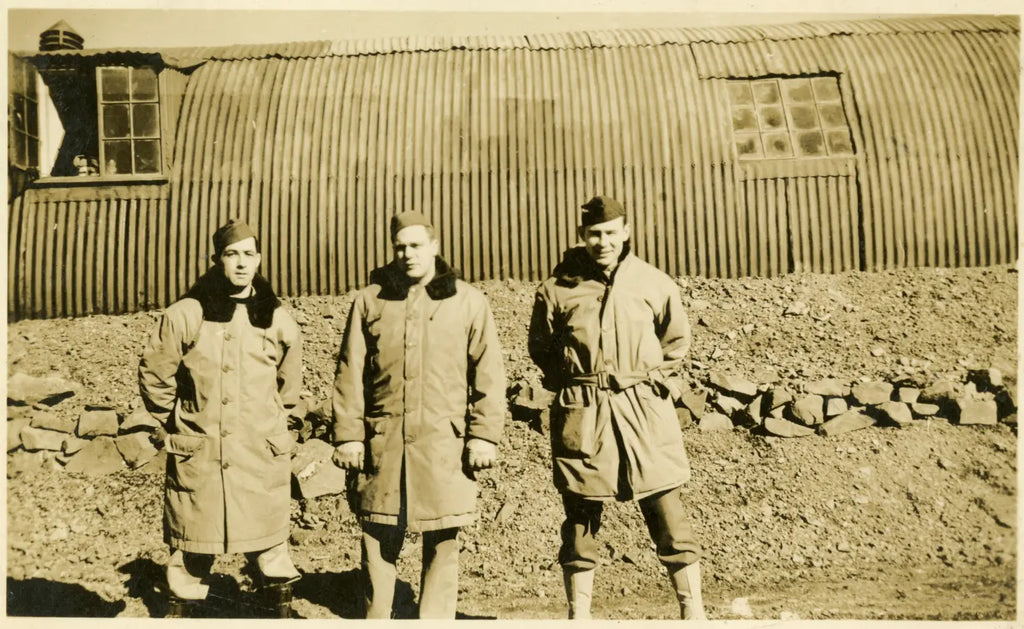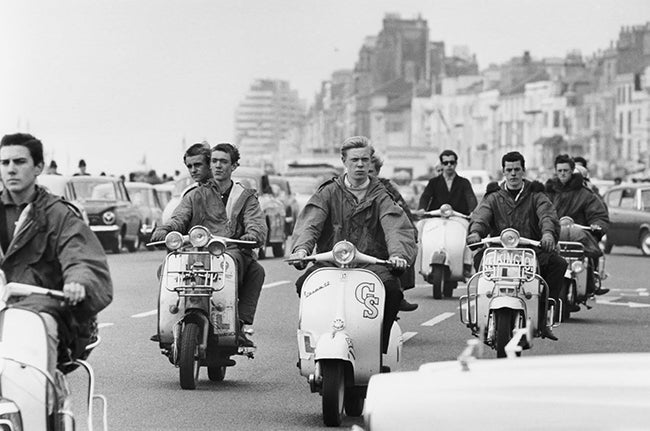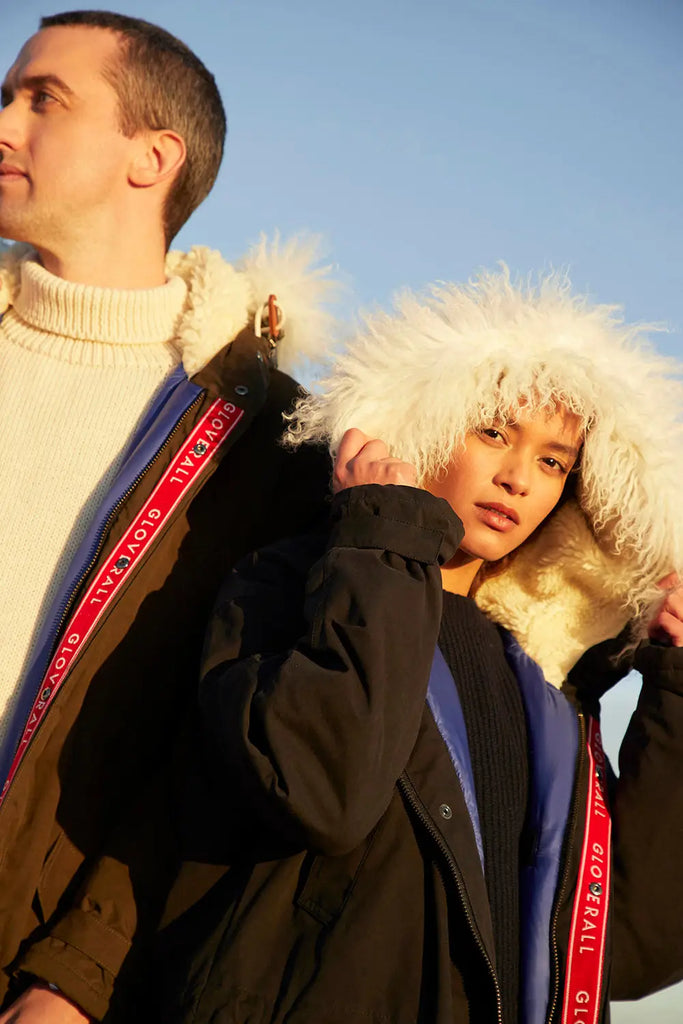The History of the Parka
Originally created by the Caribou Inuit to keep warm in the Canadian arctic, the parka was originally made from seal or caribou skin and often coated with fish oil for waterproofing. The word “parka” is thought to come from the Nenets language, translating as “animal skin”.

Source: Vancouver Maritime Museum - Leonard McCann Archives // Inuit Women
Parkas were adopted by the US military, for pilots and soldiers stationed in cold climates, with their oversized fit enabling them to be worn over bulky uniforms. Hoods were lined with fur for added warmth, and later replaced with pile due to wartime rationing. The large pockets made it a practical garment with room for storing food or ammunition.

Source: The National WWII Museum // US soldiers in Reykjavik, 1943
In 1951, the fishtail parka was created for soldiers to wear during the Korean war. It featured a drawstring in the hem which allowed the coat to be tied around the legs to trap more heat in.

Source: Unknown // Mods at Brighton Beach, 1964
After the war, mods bought military surplus parkas, customising them with patches and badges. The loose fit meant they could be easily styled over a slick suit, keeping it protected from dirt on the road when riding. The release of Quadrophenia in 1979, celebrated mod style and cemented the parka as a key style. The advent of Britpop in the 90s saw the parka return, famously worn by Liam Gallagher.

Inspired by the classic military parka, our Charlie Unisex Parka is available in navy and khaki, with a colourful contrast blue lining and finished with red Gloverall tape trim. For a lightweight take on the parka, our E. Tautz X Gloverall Parka features bold colour-blocking and a focus on refined details.